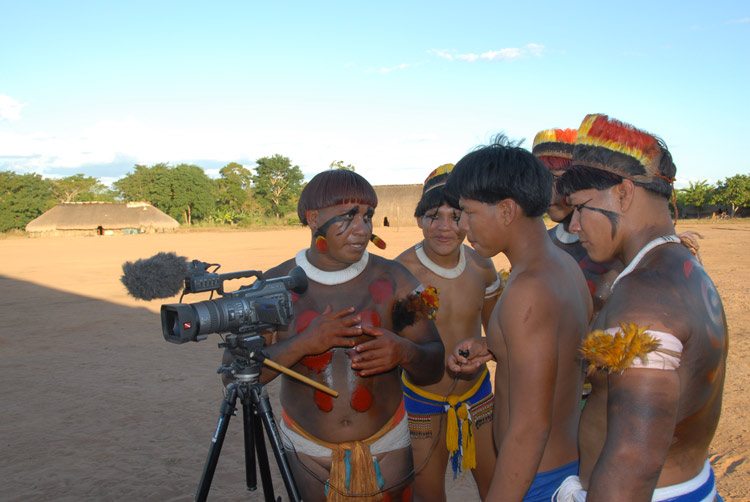In 1943, the Brazilian government mounted the Rocandour-Xingu expedition, whose goal was to establish contact with several Indian groups living in the central region of Brazil. This mission was assigned to the Villas Boas brothers who, for the next forty years, had the delicate task of attenuating the brutal clash between two conflicting civilizations. The Xingu Park was officially created in 1961 in the north of Mato Grosso, a transitional zone between cerradoand tropical forest. The Park is home to many Indian communities (Aweti, Ikpeng, Kaiabi, Kalapalo, Kamaiurá, Kuikuro, Matipu, Mehinako, Mahukwá, Suya, Tapaiuna, Trumaï, Waurá, Yawalapiti, Yudja), with the Xingu river — an affluent of the Amazon — and many other rivers flowing through it.
The region is rich in wildlife. Jaguars, tapirs, capybaras, birds, monkeys, wild pigs, etc. inhabit the land, while rivers, lakes and lagoons are filled with a great many species of fish, including tucunarés, pacus, matrinxas, etc.
The year is divided into two distinct seasons: the wet season from October to April, and the dry season from May to September. Indians have learned to adapt their economic and cultural activities to this alternation. The dry season is the time of fishing expeditions, fruit gathering and great ceremonies.
Goals :
Person in charge :
Partners :
Activities :
• Through its cultural department and FMCA, ICRA has freed up a financial contribution of 1,500€ (for the purchase of the camera and cassettes). 30 hours of film have been shot by an indigenous team.
• A first film called Itsatxi was edited and released only for the Yawalapiti community. Sixteen DVD copies were made from the film and given to each of the sixteen families making up the Yawalapiti community. Anako has managed to secure a budget from France Télévision for the production of a second film, with the agreement of the Yawalapiti community. The film will be about the project itself and will allow the Yawalapiti leaders to voice their concerns and motivations for this project. 10,000€ drawn from this production will be allocated to its continuation and the funding of several other projects planned by the Yawalapiti. Among them:
• Acquisition of a second camera, a stock of HDV films and a digital editing unit, so they can produce films themselves from A to Z.
• Fuel supplies for the motorboats taking Yawalapiti leaders to the various meetings outside the indigenous park so their voices can be made as loud as possible.

